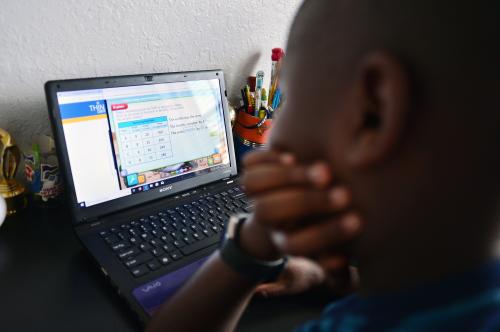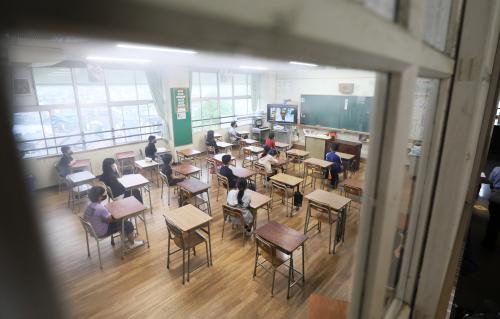Even compared to past school closures during global crises, such as the Spanish flu, the level of education disruption and lost learning today due to COVID-19 is unparalleled. Though much about the current global pandemic remains unknown, history and emerging research teach us that the COVID-19 crisis will have deep and lasting repercussions for both education and earnings, at both the individual and aggregate levels: The impact of the Spanish flu lasted into the 1980s, with children in utero during the pandemic later showing reduced educational attainment and lower income—among other losses—as compared with other birth cohorts.
In our recently updated paper published by the World Bank, we offer an initial projection of lost earnings that will result from the current school closures, as well as how these losses will lead to reductions in gross domestic product (GDP) across low-, middle-, and high-income countries. This analysis builds on our recent cost of school closures blog but with a broader global outlook rather than focusing on the United States as an illustrative country example. With such startling findings, it is important to look at the data from multiple angles to get a clear picture of the virus’s sobering impacts.
Global economic projections
We began by assuming that every additional year of schooling equates to 8 percent in additional future earnings, a lower bound estimate given the global evidence on rates of return to education. We then used the number of months of education closures in countries to estimate the loss in marginal future earnings.
Next, we assumed that only 10 percent of students would suffer a loss of learning. This conservative adjustment accounts for the range of online and distance learning measures that has been made available during the closures. In practice, emerging evidence suggests resources are more readily available to students in high-income countries, and within countries to families in higher income quintiles.
Finally, we estimate total earnings losses for today’s students assuming a range of labor force participation rates between 70 and 100 percent.
Applied to the worldwide economy, the model projects a future earnings gap of $11,117 at the individual level, or between $10.6 trillion and $15.1 trillion (depending on the labor force participation rate) for the whole global cohort. In high-income countries, the projected individual earnings gap is $21,158, or between $3.4 trillion and $4.9 trillion for the whole cohort.
In low-income countries, the projected individual earnings gap is $2,833, or between $252 billion and $360 billion (depending on the labor force participation rate) for the whole cohort. In a context of already low wages, depressed growth forecasts, and high rates of poverty, this gap suggests a potentially devastating economic loss for this group of nations.
In middle-income countries, projected individual losses are $6,777, or between $4.8 trillion and $6.8 trillion (depending on the labor force participation rate) for the whole cohort. More than 1 billion of the 1.5 billion students affected by closures live in middle-income countries.
In terms of GDP, projected losses range from 43-61 percent (depending on the labor force participation rate) in low-income countries, to 15-22 percent in middle-income countries, to 6-9 percent in high-income countries. Taking the weighted average by population for the three regions gives us a world estimate of 12-18 percent in lost GDP due to COVID-19. The scale and implications of this statistic are hard to comprehend.
By education level, post-secondary school graduates stand to lose $725 a year in present value terms, and almost $18,000 over a lifetime. Secondary school graduates will lose $363 a year and almost $9,000 over a lifetime, while those with less than secondary will lose $272 a year and $6,700 over a lifetime. But since most students around the world are in primary—at 49 percent—or secondary school—at 39 percent—then in terms of aggregate losses, they will be much higher at the lower levels of education, between $6.5 trillion and $9 trillion. But the earnings losses will hurt those with lower levels of schooling more, as they are likely to move many people to a level of income where it is difficult to meet basic needs. The proportionate impact on a low-wage earner is, therefore, greater in absolute terms as it will affect his or her ability to achieve food security, affordable housing, and so on, compared with a relatively high-wage earner.
Our paper is a starting point for research on the impact of school closures on the current cohort of students worldwide. There are complicating issues, including the uneven quality of education across and within countries, differences in the provision of effective distance learning, and other pressures that will come to bear on some children and youth, such as the need to find work to help support their families. With this contribution, we hope to assist governments in making increasingly informed choices about school closures, and to start a debate on mitigating the impacts on education systems.







Commentary
Wages and GDP lost due to COVID-19 school closures
August 27, 2020